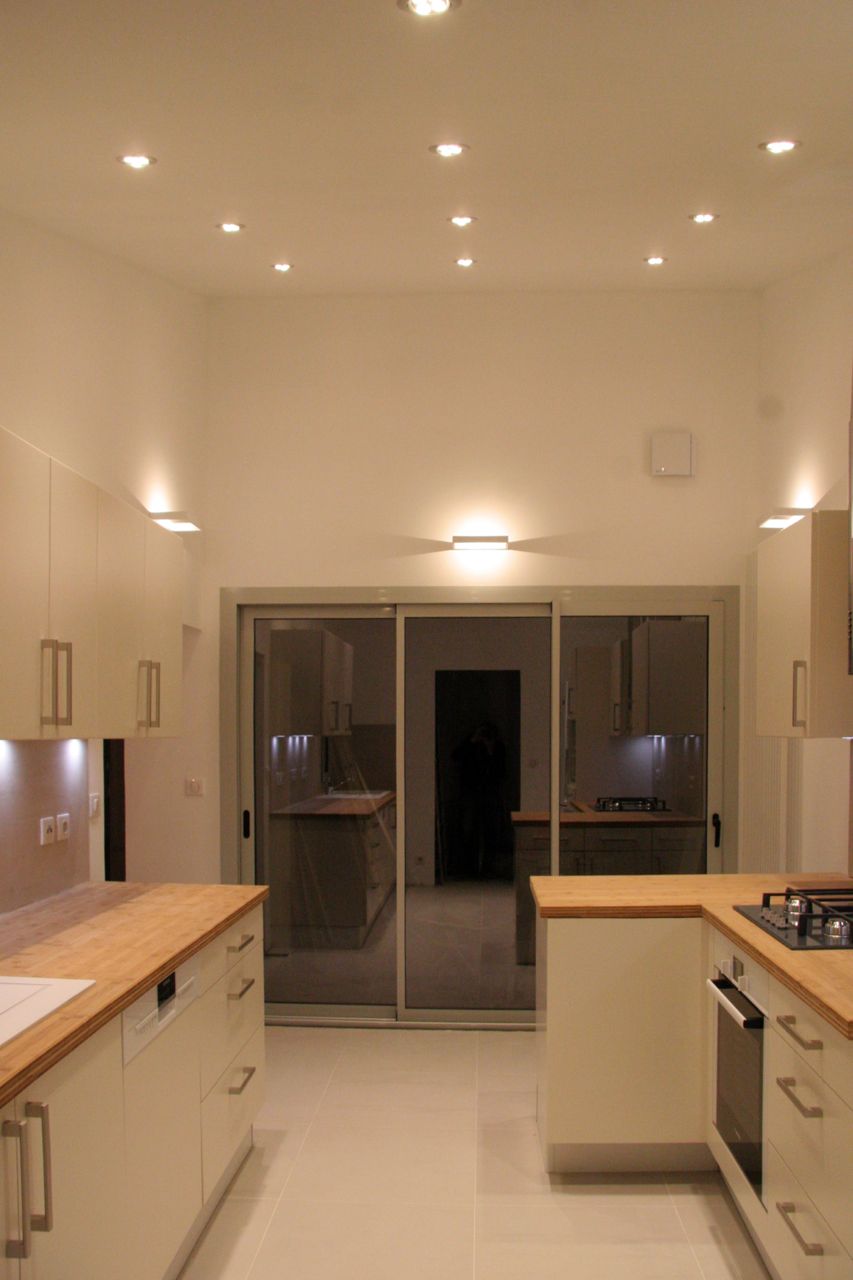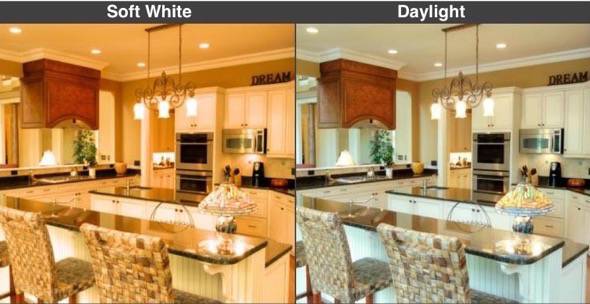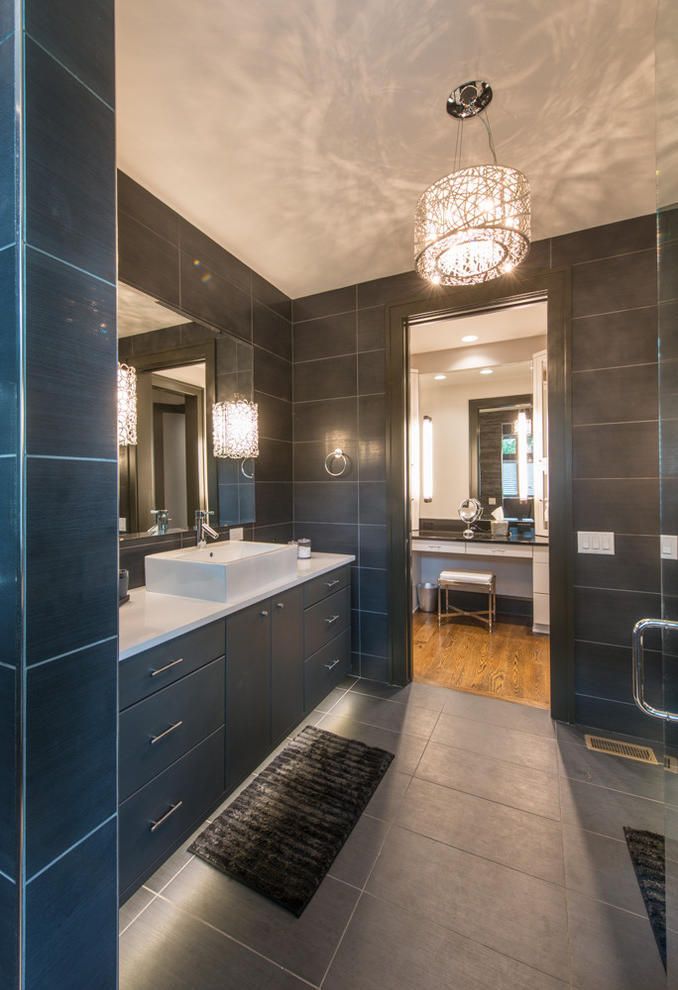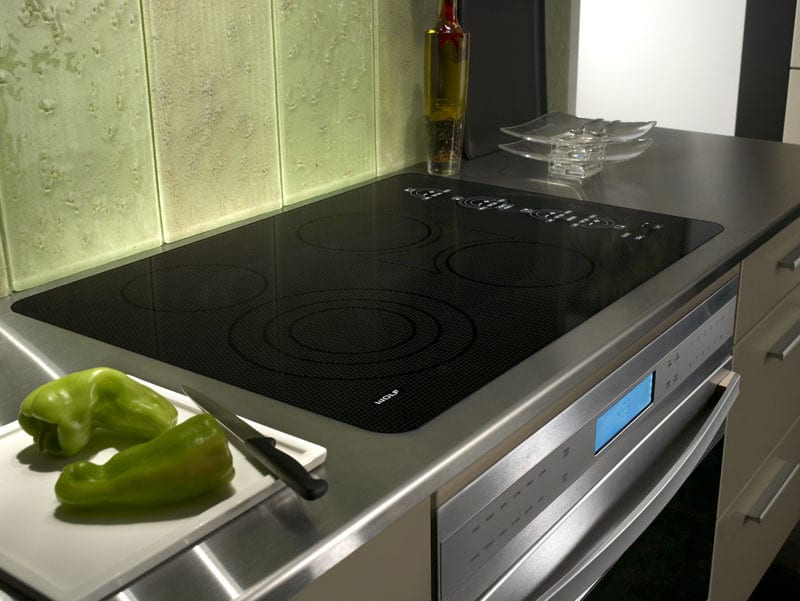Choosing the Best Light Temperature for Your Kitchen
Selecting the right light temperature for your kitchen is essential for creating a welcoming and functional space where you can cook, dine, and entertain with ease. The light temperature, measured in Kelvin (K), determines the warmth or coolness of the light emitted by your lighting fixtures. Let’s discuss the different light temperatures available for kitchens, their effects on the ambiance and functionality of the space, and how to choose the best option for your needs.

Understanding Light Temperature
Light temperature is categorized into three main color ranges: warm, neutral, and cool. Warm light has a yellowish or reddish hue and is typically associated with cozy and inviting spaces. Neutral light has a white or off-white color and provides a balanced illumination that is suitable for various tasks. Cool light has a bluish or daylight-like hue and is often used to create a bright and energizing atmosphere.
In kitchen lighting, the most common light temperatures used are:
- Warm White (2700K – 3000K): Warm white light creates a cozy and inviting ambiance in the kitchen, making it ideal for dining areas and evening gatherings. It enhances the warmth and richness of wood cabinetry and countertops, creating a welcoming atmosphere for cooking and entertaining.
- Neutral White (3500K – 4000K): Neutral white light provides a balanced illumination that is suitable for food preparation and cooking tasks. It offers good color rendering, allowing you to see the true colors of ingredients and food items. Neutral white light is often used in under-cabinet lighting and recessed fixtures to provide task lighting in the kitchen.
- Cool White (5000K – 6500K): Cool white light has a bright and energizing quality that is ideal for task-oriented areas such as food preparation and cooking stations. It simulates natural daylight, making it easier to see details and work with precision. Cool white light is commonly used in overhead fixtures and pendant lights to provide general illumination in the kitchen.

Effects on Ambiance and Functionality
The light temperature in your kitchen can have a significant impact on the ambiance and functionality of the space. Warm white light creates a cozy and intimate atmosphere that is well-suited for relaxed dining and socializing with family and friends. It softens harsh lines and shadows, creating a more inviting and comfortable environment for everyday activities.
Neutral white light provides a balanced illumination that is suitable for various kitchen tasks, including food preparation, cooking, and cleaning. It offers good color rendering, allowing you to accurately see the colors of ingredients and food items. Neutral white light is often used in task-oriented areas such as under-cabinet lighting and recessed fixtures to provide focused illumination where needed.
Cool white light has a bright and energizing quality that is ideal for task-oriented areas such as food preparation and cooking stations. It simulates natural daylight, making it easier to see details and work with precision. Cool white light is commonly used in overhead fixtures and pendant lights to provide general illumination in the kitchen, creating a bright and airy atmosphere that is conducive to productivity and efficiency.

Choosing the Best Light Temperature
When choosing the best light temperature for your kitchen, consider factors such as the overall design aesthetic, the specific tasks performed in the space, and personal preferences. Warm white light is well-suited for creating a cozy and inviting atmosphere in dining areas and social spaces, while neutral white light provides balanced illumination for food preparation and cooking tasks.
If you have a modern or contemporary kitchen with sleek and minimalist design elements, cool white light may complement the aesthetic and enhance the overall ambiance. However, it’s essential to strike a balance between aesthetics and functionality to ensure that the lighting meets your practical needs while enhancing the visual appeal of the space.
Consider using a combination of different light temperatures to create layers of illumination in your kitchen. For example, you can use warm white light in dining and social areas, neutral white light in task-oriented areas such as food preparation and cooking stations, and cool white light in overhead fixtures for general illumination.

Installation and Placement
Once you’ve chosen the best light temperature for your kitchen, it’s essential to consider the installation and placement of your lighting fixtures. Position overhead fixtures such as recessed lights and pendant lights strategically to provide even and balanced illumination throughout the space.
For task-oriented areas such as food preparation and cooking stations, install under-cabinet lighting or track lighting to provide focused illumination where needed. Consider incorporating dimmer switches or adjustable fixtures to control the intensity and brightness of the light, allowing you to customize the ambiance and functionality of the space based on your needs and preferences.

Common Mistakes to Avoid
Mismatched Light Temperatures: Mixing different light temperatures in the same space can create an inconsistent and disjointed appearance. Ensure consistency by selecting a cohesive light temperature scheme that complements the overall design aesthetic of your kitchen.
Insufficient Lighting: Failing to provide adequate lighting in key areas such as food preparation and cooking stations can make tasks more challenging and increase the risk of accidents. Ensure proper illumination by installing sufficient lighting fixtures in task-oriented areas and adjusting the placement and intensity as needed.
Overlooking Dimming Options: Neglecting to incorporate dimmer switches or adjustable fixtures can limit your ability to control the ambiance and functionality of your kitchen lighting. Include dimming options in your lighting design to create flexibility and versatility in your space.
Ignoring Energy Efficiency: Opting for inefficient lighting fixtures or bulbs can result in higher energy consumption and increased utility costs over time. Choose energy-efficient LED bulbs and fixtures to minimize energy usage and reduce your environmental footprint while enjoying long-lasting and reliable illumination.

Can I mix different light temperatures in my kitchen?
While it’s possible to mix different light temperatures in your kitchen, it’s essential to do so thoughtfully to ensure a cohesive and harmonious look. Consider the overall design aesthetic and functionality of the space when selecting light temperatures and aim for consistency throughout.
What is the best light temperature for under-cabinet lighting?
The best light temperature for under-cabinet lighting depends on personal preferences and the desired ambiance and functionality of the space. Warm white light (2700K – 3000K) is commonly used for under-cabinet lighting to create a cozy and inviting atmosphere while providing adequate task illumination.
Can I install dimmer switches for my kitchen lighting?
Yes, dimmer switches can be installed for kitchen lighting to provide flexibility and control over the ambiance and functionality of the space. Dimming options allow you to adjust the brightness and intensity of the light to suit different activities and preferences.
Is cool white light suitable for dining areas in the kitchen?
Cool white light (5000K – 6500K) is typically not recommended for dining areas in the kitchen as it can create a bright and harsh atmosphere that may not be conducive to relaxation and socializing. Warm white light is generally preferred for dining spaces to create a cozy and inviting ambiance.
How can I determine the best light temperature for my kitchen?
To determine the best light temperature for your kitchen, consider factors such as the overall design aesthetic, the specific tasks performed in the space, and personal preferences. Experiment with different light temperatures and observe how they affect the ambiance and functionality of the space before making a final decision.

The Bathroom Ceiling Lights Ideas #3203 Bathroom Ideas

Kitchen Lighting Ideas

Rustic Kitchen Lighting

Wolf CT30EU 30 Inch Smoothtop Electric Cooktop with 4 Heating Elements, 7 Zones, True Simmer

Related Posts:
- Kitchen Lighting Ideas Pictures Island
- Tuscan Kitchen Light Fixtures
- Kitchen Ceiling Light Bulbs
- Kitchen Lighting Options Photos
- Galley Kitchen Lighting Plans
- Dark Kitchen Cabinets With Light Granite Countertops
- Recessed Lighting In Kitchen Soffit
- Reset Lighting Kitchen
- Pendant Light Fixtures Over Kitchen Island
- How Much To Install Recessed Lighting In Kitchen